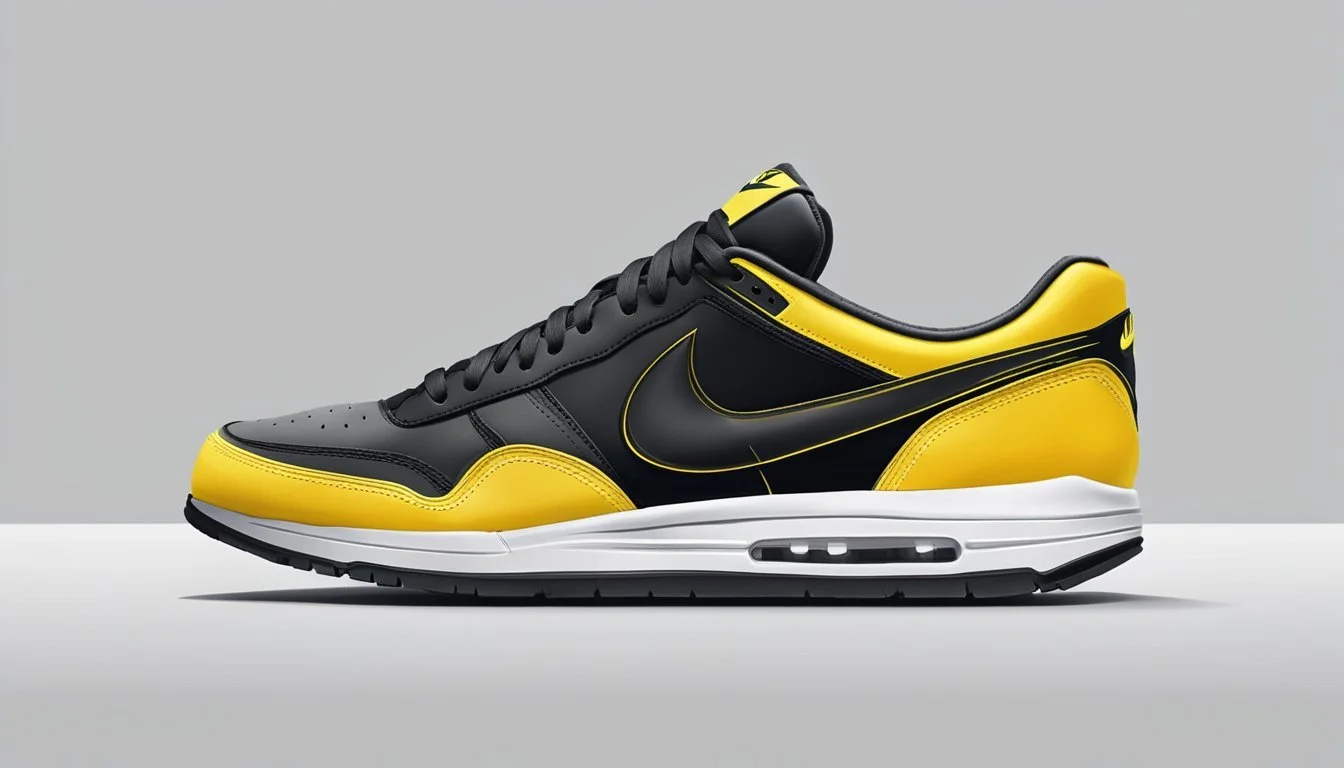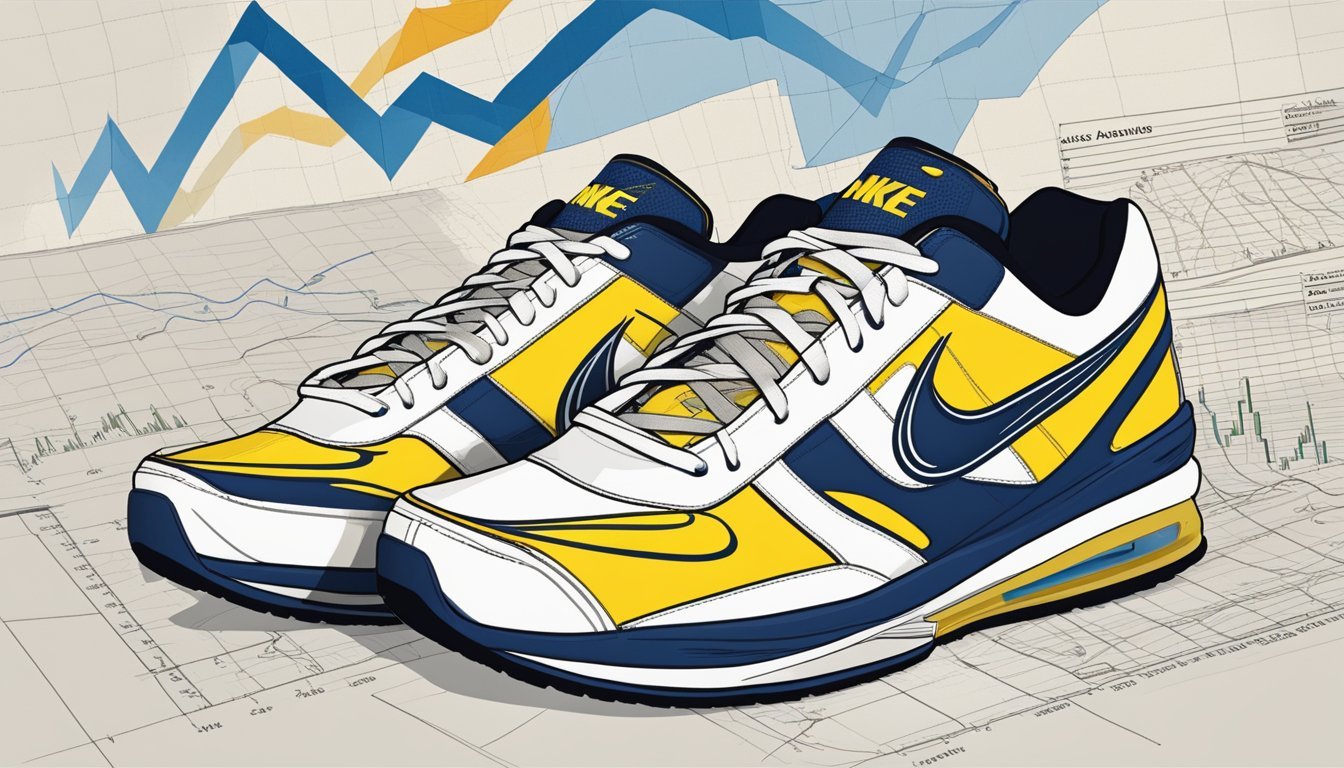The Legacy of Lance Armstrong Nike Shoes
The Controversial Cycling Legend's Footwear Legacy
Lance Armstrong's legacy in cycling may be controversial, but his partnership with Nike produced some memorable footwear. The collaboration between Armstrong and the sportswear giant resulted in a range of shoes that captured the attention of sneaker enthusiasts and supporters of the LIVESTRONG foundation.
Nike's LIVESTRONG collection featured iconic designs like the Air Max 90 Hyperfuse and LunarGlide, often incorporating the foundation's signature yellow color. These shoes not only served as performance wear for athletes but also as symbols of support for cancer awareness and research.
While the partnership ended in 2013, the Nike x LIVESTRONG shoes remain sought after by collectors. The designs represent a unique period in Nike's history, blending athletic performance with a powerful social cause. Many consider these collaborations among the best LIVESTRONG products ever created, showcasing Nike's innovative approach to both style and charitable partnerships.
The Lance Armstrong – Nike Partnership
Lance Armstrong and Nike formed a powerful partnership that spanned over a decade. Their collaboration produced iconic products and marketing campaigns that merged sports performance with cancer awareness.
History of the Collaboration
Nike began sponsoring Lance Armstrong in 1996, supporting his cycling career. The partnership gained momentum after Armstrong's battle with cancer and subsequent Tour de France victories. In 2004, Nike and Armstrong launched the LIVESTRONG Foundation, creating the famous yellow wristbands.
The 10//2 Collection, introduced by Nike, celebrated Armstrong's life and cycling achievements. This line included high-performance cycling gear and casual lifestyle products, reflecting Armstrong's dual persona as an athlete and cancer survivor.
Nike integrated yellow throughout their Armstrong-related products, symbolizing the Tour de France leader's jersey and hope for cancer patients.
Impact on Branding and Marketing
The Armstrong-Nike partnership revolutionized sports marketing by combining athletic performance with social cause promotion. LIVESTRONG became a global brand, transcending cycling to represent cancer awareness and survivorship.
Nike created numerous LIVESTRONG-themed products, including popular sneaker lines. These shoes merged athletic performance with charitable giving, as $1 from each sale went to the LIVESTRONG Foundation.
The collaboration's marketing campaigns were emotionally powerful, featuring Armstrong's comeback story. This approach resonated with consumers, boosting both Nike's brand image and LIVESTRONG's visibility.
Despite the partnership's eventual dissolution due to Armstrong's doping scandal, its impact on cause-related marketing remains significant.
Design and Features of Lance Armstrong Nike Shoes
Lance Armstrong's collaboration with Nike produced distinctive shoes that blended performance and style. These shoes incorporated cutting-edge technologies, unique design elements, and high-quality materials to create footwear that stood out both on and off the bike.
Technological Innovations
Nike integrated advanced technologies into Lance Armstrong's signature shoes to enhance performance. Many models featured Flywire technology, using ultra-lightweight yet strong fibers to provide targeted support. The shoes often incorporated Nike Air units in the heel for responsive cushioning during intense rides.
Some designs utilized Lunar foam in the midsole, offering a soft and springy feel. Nike also developed specialized outsole patterns to improve traction on and off the bike. Breathable mesh uppers helped keep feet cool during long training sessions or races.
Signature Design Elements
Lance Armstrong Nike shoes featured distinctive visual elements that set them apart. The LIVESTRONG yellow became a prominent color, often used for accents or as the primary hue. Many designs incorporated Armstrong's personal logo or his racing number.
Some models displayed inspirational phrases or cancer awareness messages. The shoes frequently combined sleek, aerodynamic shapes with bold graphic prints. Limited edition releases often celebrated Armstrong's Tour de France victories or other career milestones.
Nike created versatile designs suitable for both cycling and casual wear, appealing to Armstrong's fans beyond just serious cyclists.
Material and Construction
Nike used premium materials in Lance Armstrong's signature shoes to ensure durability and comfort. Many models featured lightweight synthetic leather uppers for structure and support. Mesh panels enhanced breathability in key areas.
The shoes often incorporated carbon fiber plates in the soles to improve power transfer while pedaling. Nike's Flywire technology used high-strength threads to reduce overall weight. Some designs featured water-resistant coatings to protect against light rain or road spray.
Cushioned insoles provided additional comfort for long rides. Nike paid close attention to the fit, creating shoes that hugged the foot securely without causing pressure points.
Marketing Campaigns
Nike's partnership with Lance Armstrong produced several high-impact marketing initiatives. These campaigns leveraged Armstrong's cycling success and cancer survival story to promote both Nike products and charitable causes.
Live Strong Campaign
The Live Strong campaign launched in 2004, uniting Nike and the Lance Armstrong Foundation. Yellow silicone wristbands became a global phenomenon, raising awareness and funds for cancer research. Over 80 million bands were sold, generating $100 million for the foundation.
Nike created special edition Live Strong shoes and apparel. The distinctive yellow accents adorned Armstrong's cycling gear during competitions. This visual branding reinforced the connection between Nike, Armstrong, and the fight against cancer.
The campaign's success extended beyond fundraising. It positioned Nike as a socially conscious brand and strengthened its association with Armstrong's inspirational journey.
Advertising Strategies
Nike employed innovative advertising strategies to promote Armstrong-related products. Television commercials featured Armstrong training rigorously, emphasizing Nike's performance-enhancing gear. Print ads showcased the athlete's determination and Nike's role in his success.
Digital marketing played a key role. Nike's website offered exclusive Armstrong content and behind-the-scenes footage. Social media campaigns encouraged user engagement, with fans sharing their own inspirational stories.
Nike also utilized event marketing during major cycling competitions. Pop-up stores and interactive experiences allowed fans to connect with the brand and Armstrong's message.
Celebrity Endorsements
Armstrong's celebrity status was central to Nike's marketing efforts. His Tour de France victories and cancer survival story made him a compelling brand ambassador. Nike featured Armstrong prominently in global ad campaigns, transcending the cycling niche.
Other athletes and celebrities joined Armstrong in Nike promotions. This strategy expanded the brand's reach and reinforced its association with elite performance. Collaborations included special edition products designed by Armstrong and fellow celebrities.
Nike leveraged Armstrong's influence beyond traditional advertising. Public appearances, charity events, and motivational speaking engagements all reinforced the partnership's impact.
Economic Impact
Lance Armstrong's collaboration with Nike for signature shoes generated significant financial outcomes and market influence. The partnership leveraged Armstrong's popularity to drive sales and shape consumer behavior in the athletic footwear industry.
Sales Performance
Nike's Lance Armstrong signature shoes achieved notable commercial success. The products saw strong demand, particularly during Armstrong's peak cycling years. Sales figures for the shoes consistently exceeded expectations, contributing substantially to Nike's revenue in the athletic footwear category.
The LIVESTRONG collection, which included shoes, further boosted sales. This line raised over $80 million for the Lance Armstrong Foundation between 2004 and 2010. The iconic yellow LIVESTRONG wristband, initially priced at $1, became a cultural phenomenon and drove awareness for both the cause and the associated product line.
Market Influence
The Lance Armstrong Nike shoes had a profound impact on the athletic footwear market. They helped establish Nike as a major player in the cycling shoe segment, expanding the brand's reach beyond its traditional strongholds.
The shoes' popularity influenced design trends in performance footwear. Competitors sought to emulate the success of the Armstrong line, leading to increased innovation across the industry. The partnership also demonstrated the power of athlete endorsements in driving consumer interest and sales.
The shoes' association with Armstrong's cycling achievements and charitable efforts created a unique market position. This blend of performance, style, and social responsibility set a new standard for athletic footwear marketing strategies.
Controversies and Endorsement Termination
Lance Armstrong's cycling career and relationship with Nike came to a dramatic end following revelations of widespread doping. The scandal led to severe consequences for Armstrong's athletic achievements, sponsorships, and public image.
Doping Scandal Outcomes
The United States Anti-Doping Agency (USADA) conducted an extensive investigation into Lance Armstrong's use of performance-enhancing drugs. Their findings revealed a sophisticated doping program spanning years. As a result, Armstrong was stripped of his seven Tour de France titles and banned from competitive cycling for life.
The scandal's impact extended far beyond cycling. Armstrong's carefully cultivated image as a cancer survivor and champion athlete crumbled. His sponsors, including longtime partner Nike, faced difficult decisions about their associations with the disgraced cyclist.
End of Partnership Announcement
On October 17, 2012, Nike made the decisive move to terminate Lance Armstrong's contract. The company cited "seemingly insurmountable evidence" of Armstrong's participation in doping as the reason for ending their long-standing partnership.
Nike's announcement came on the same day Armstrong stepped down as chairman of Livestrong, the cancer-fighting charity he founded. The timing underscored the severity of the situation and the rapid unraveling of Armstrong's public persona.
Other sponsors quickly followed Nike's lead. Anheuser-Busch and several other companies also severed ties with Armstrong, dealing further blows to his reputation and financial standing.
Consumer Reaction and Brand Reputation
Nike's decision to end its relationship with Armstrong garnered mixed reactions from consumers. Some praised the company for taking a stand against cheating in sports. Others questioned why Nike hadn't acted sooner, given years of doping allegations.
The scandal posed challenges for Nike's brand image. As a company closely associated with elite athletes, Nike had to navigate the fine line between supporting their sponsored individuals and maintaining ethical standards.
In the aftermath, Nike focused on reinforcing its commitment to clean sport. The company implemented stricter vetting processes for athlete partnerships and increased support for anti-doping initiatives in various sports.
Legacy of the Collaboration
The Nike and Lance Armstrong partnership left an indelible mark on sports, philanthropy, and marketing. Their collaboration transcended cycling to impact cancer awareness, athlete sponsorships, and cause-related branding.
Effect on Cancer Awareness
The yellow LIVESTRONG wristbands became a global symbol of cancer support. Over 80 million bands were sold, raising significant funds for cancer research and patient services. Nike's partnership amplified Armstrong's message, reaching millions through product lines and marketing campaigns.
The collaboration brought cancer conversations into the mainstream. It encouraged open dialogue about the disease and inspired many to get involved in fundraising efforts.
Celebrity endorsements of the cause increased dramatically. This led to greater media coverage and public engagement with cancer-related initiatives.
Continuing Influence in the Cycling Community
Armstrong's Nike shoes became coveted items among cycling enthusiasts. The designs influenced trends in both professional and recreational cycling gear.
Many of the technological innovations developed for Armstrong's shoes trickled down to consumer products. This improved performance and comfort for cyclists at all levels.
The partnership raised cycling's profile as a sport. It attracted new participants and increased interest in professional cycling events worldwide.
Significance in Sports Marketing History
Nike and Armstrong pioneered cause-related sports marketing on a massive scale. Their approach became a template for future athlete-brand partnerships with social missions.
The collaboration demonstrated the power of emotional branding. It showed how aligning with a cause could boost brand loyalty and sales while supporting important initiatives.
This partnership set new standards for athlete sponsorships. It expanded the role of athletes from product endorsers to brand ambassadors and social influencers.
The success of LIVESTRONG products proved the commercial viability of cause-related merchandise. This inspired other brands to create similar lines supporting various causes.



